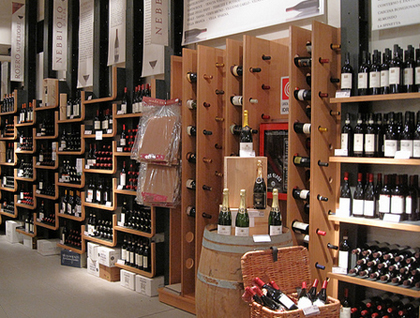THERE is nothing of the faux Bordeaux chateau about the Torres Alegre winery. It blends so delicately into the dusty Baja Californian landscape, amid vineyards, olive groves and dirt roads, that your correspondent at first drove straight past it. Its chief winemaker, Victor Torres Alegre, was trained 30 years ago in Bordeaux and has an engaging oenologist’s intensity. But it is the likes of his goatee-sporting son Leonardo who are carving a new niche for Mexican wine. With smooth labels and prices high enough to carry a hint of snob value, a new crop of young winemakers is planning to provide something hip to Mexico’s young, upwardly mobile middle class.
In a land where about 1m new beer drinkers come of age each year and where tequila is sipped lovingly, this is a tough sell. Though Spanish missionaries brought vines to Mexico in the 16th century, the wine industry has never flourished. But it turned its latest setback into an advantage. Just when tourists from the United States were starting to travel down to the Valle de Guadalupe, about two hours’ south of San Diego, to try out Mexican wine, an outbreak of violence (now mostly over) in nearby Tijuana scared them away. So local producers looked to the domestic market instead. Drinking Mexican wine with modern, lighter Mexican food has become “aspirational”, according to marketers.Smaller-scale wine producers face obstacles. In Baja California, where about 75% of Mexico’s 3,600 hectares (8,900 acres) of vines are planted, water is scarce, which keeps volumes low and prices high. As in other Mexican industries, the market is dominated by big players (such as L.A. Cetto). Distribution is controlled by huge chains, such as Walmart, who favour big brands.Sales are still modest, but growing fast. Ramón Vélez of the Mexican Winemakers’ Council says volumes have doubled since 2000 to about 70m litres and values have tripled. But consumption per head is a fraction of what it is in the United States. More than two-thirds of the wine consumed in Mexico is still imported, mainly from Spain, Chile and Argentina (Americans unjustly remain a bit sniffy about selling to Mexicans; Mexicans unjustly feel the same about American wine).
Some are undaunted. Wenceslao Martínez, a 30-year-old self-taught wine-maker, produces his Relieve wines from the backyard of his father’s construction business in Ensenada. Yet the wine is tasty and sales are brisk. They give the lie to a view whispered by malicious tongues north of the border that the only good Mexico has ever done for wine is to send grape pickers to Napa Valley.
